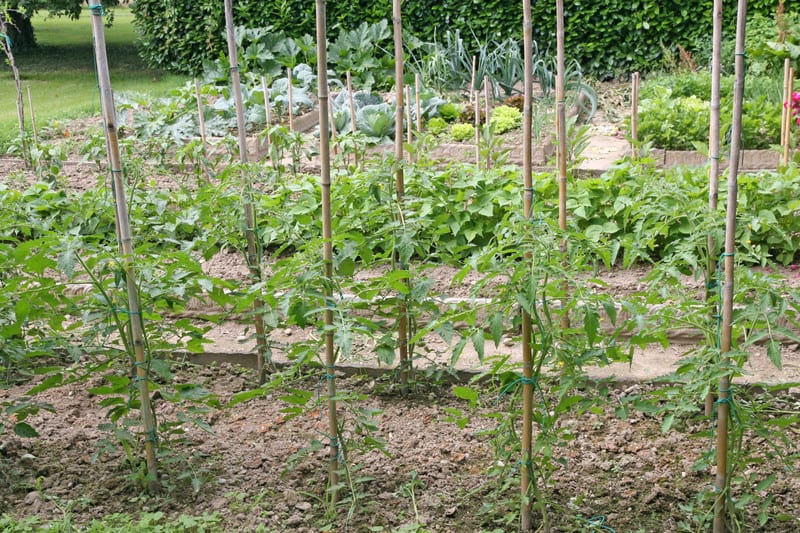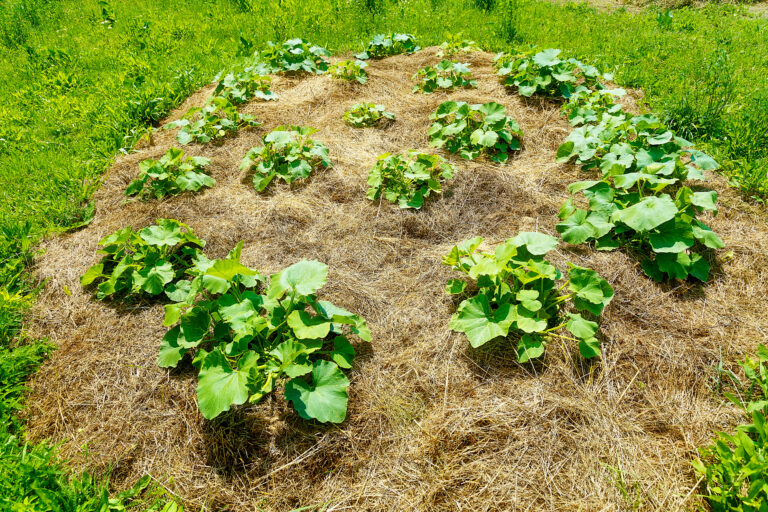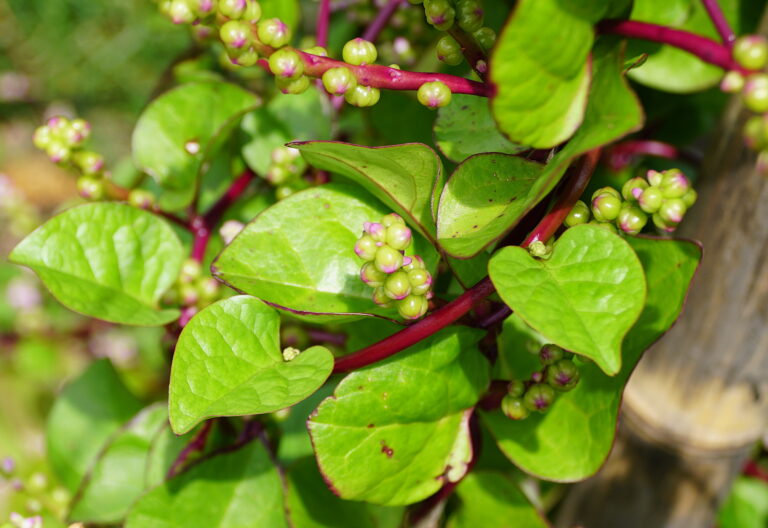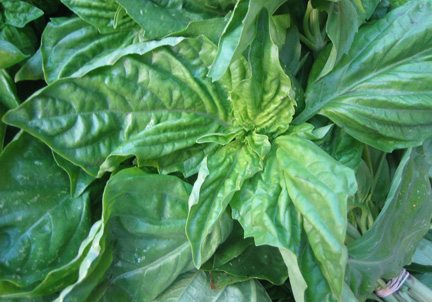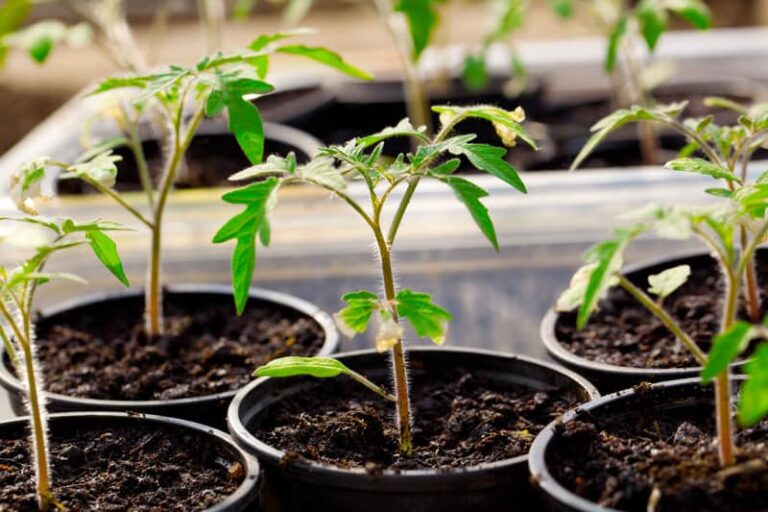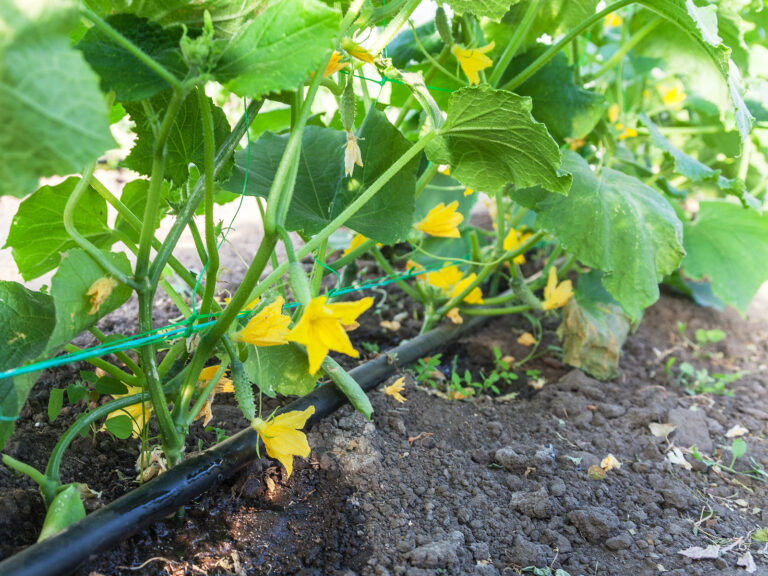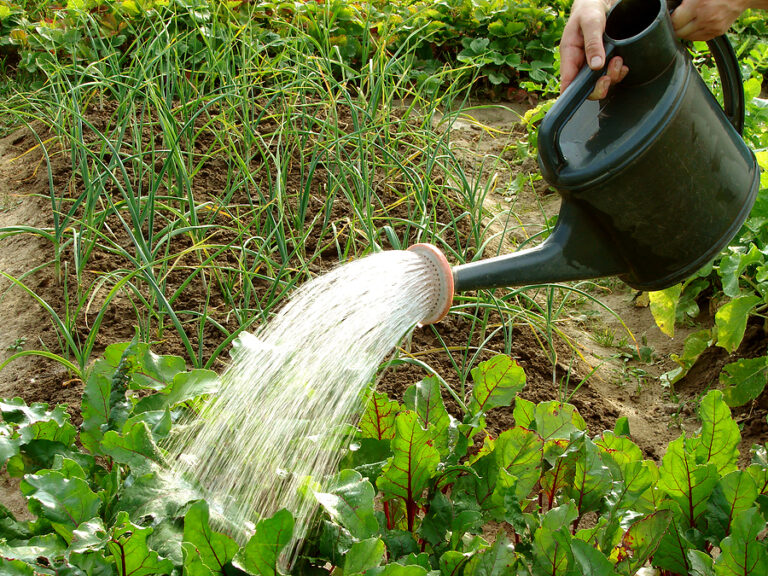How to Grow Tomatoes on Stakes for a Big Harvest
Grow tomatoes on stakes to ripen fruits earlier than plants that are not staked. Grow tomatoes on stakes to keep fruit cleaner and easier to spot at harvest.
You can grow almost twice as many staked tomatoes in a given area than if you let plants grow unstaked or in cages.
Tomatoes grown on stakes are commonly a little larger on average than tomatoes grown on unstaked plants. That’s because staked tomatoes are usually pruned to the stake allowing more energy to flow to the plant’s ripening fruit. Harvest generally comes earlier for staked tomatoes.
Insect and disease control is easier when tomatoes are staked because leaves and fruit are exposed as are pests and diseases.
Vining, indeterminate-type tomatoes can be staked. Bushy, determinate-type tomato varieties (which commonly grow to just 3 feet tall) do not require stakes or cages.
Stakes and supports
Wooden stakes are the most common tomato supports; they are usually 1-by-1-inch or 2-by-2-inch boards (the larger may be better if you are growing heavy fruiting varieties) 6 to 8 feet long made of clean lumber or tree branches. Choose stakes that are large enough and strong enough to provide support for the tomato variety you plan to grow.
Remember some indeterminate tomatoes can grow to 15 feet or greater if not pruned. If you are growing tall varieties, you will need longer stakes. Use a sledgehammer to drive the stake 1½ to 2 feet into the ground.
Set stakes 3 to 5 inches from the tomato plants. The portion underground will tend to rot out each year.
You can also use metal stakes; there are curled metal stakes sold at many garden centers designed specifically for staking vining tomatoes.
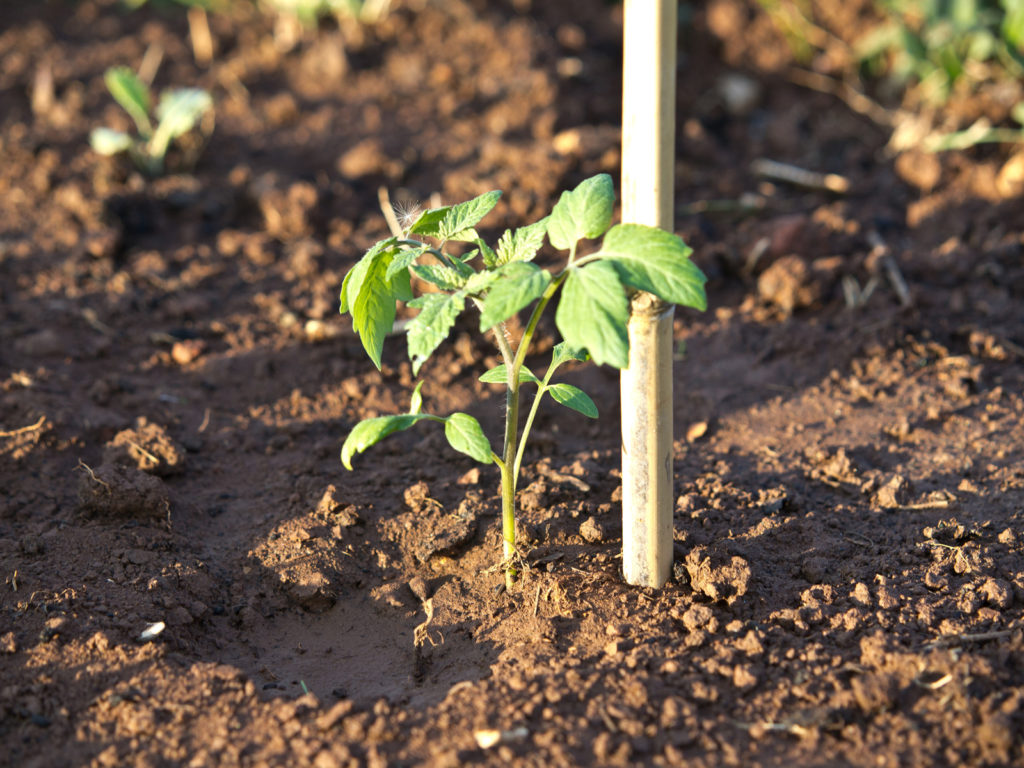
Single-stake and multiple-stake methods
Single stake method
If you are using one stake for each plant, drive the 8-foot-long 2-by-2-inch stake into the ground at planting time. Plant the tomato after the stake has been set.
Set plants on the side of the stake away from prevailing breezes. If possible, grow plants on the south side of the stake where the single-stem plant will not be hidden from the sun.
As the plant grows, tie a strip of horticultural tape (a plastic stretchy tape), cloth, nylon stockings, raffia cord, or coated wire tightly to the stake and loosely around the stem of the plant; leave an inch or two of slack. Add ties as needed as the plant grows up the stake.
Single stake plants are commonly pruned to a single stem; as the plant grows a single stem—the main stem—is trained to the stake at intervals; all side branches or side shoots (suckers that form at the axil of the leaf branch and stem) are pinched or broken off so that the plant does not grow bushy.
A single-stem plant will commonly fruit up to two weeks earlier than multi-stem tomatoes. Severe pruning will reduce the total crop but direct energy to the ripening of the fruit left on the plant; this may also decrease the incidence of blossom-end rot.
Multiple stake method
Heavy-vining and heavy-cropping tomatoes will likely require two wood stakes with cross supports next to each plant; foot-long cross supports can be nailed to the main stakes at two-foot intervals before sinking them into the ground. You can also make a boxlike support system for each plant from four stakes and cross supports.
Using multiple stakes you can train your tomato plants to two stems or more. Choose the stems you want to keep—the strongest stems–and pinch out the other as they develop. Be sure to leave a couple of leaves at the base of each stem you choose to shade developing fruits on the stems below.
If you use multiple stakes with cross supports, you may want to train your plants to the upwind side of the supports so the plant will rest against the cross supports when the wind is blowing.
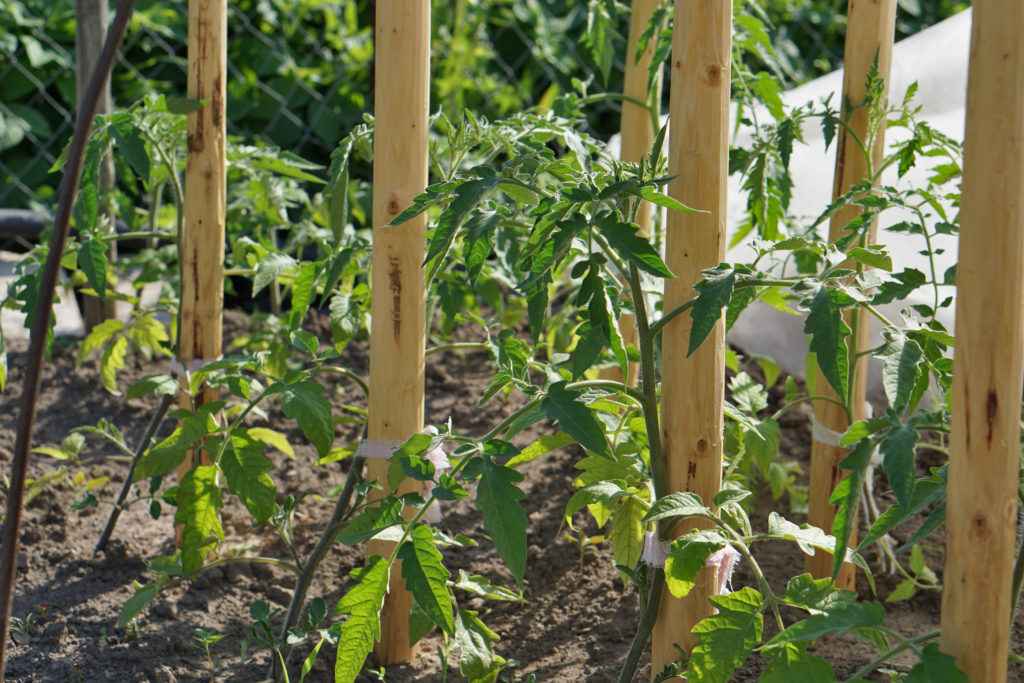
Tying-in tomato plants
Put stakes in place before setting plants in the soil if possible. This way you will avoid damage to plant roots as you drive stakes into the ground.
Tie in plants to the stake 2 or 3 inches above the leaf stems then loop the tie loosely around the main stem not far below the base of the leaf stem and fasten with a square knot or figure-eight loop.
Try to keep flower clusters away from the stakes, otherwise, the tomatoes will be crowded between the stem and the stake as they enlarge.
Check plants every four or five days to see if they need extra support; you will have to tie plants every ten days or so—depending on the growth rate.
Disadvantages of staking tomatoes
Here are the disadvantages of staking tomatoes:
- It takes time and effort to stake, train, and prune tomatoes.
- Staked tomatoes may be more susceptible to cracking and sunscald because of less foliage cover.
- Pruning away side shoots can reduce yield.
- Stake tomatoes may require more water because plants are exposed to the drying sun.
Tomato Growing Hub
Start here: The Ultimate Tomato Growing Guide: From Seed to Harvest
Growing Tips
- Getting Started with Tomatoes: A Gardener’s Guide to Success
- How to Choose a Tomato for Your Garden
- Growing Early-Season Tomatoes for Great Taste
- Heirloom and Hybrid Tomatoes
Planting Tips
- Tomato Seed Starting Tips
- Mastering Tomato Seed Starting: How to Grow Strong and Healthy Plants Indoors
- When to Plant Tomatoes: A Gardener’s Guide to Timing and Success
- Plant Tomatoes for a Thriving Crop: Sun, Soil, and Spacing
- How to Transplant Tomato Seedlings: A Gardener’s Guide
- Growing Tomatoes in Containers
Tomato Care
- Watering and Feeding Tomatoes: Expert Tips for a Healthy, Productive Crop
- Best Ways to Support Your Tomato Plants
- Pinching and Pruning Tomatoes: A Gardener’s Guide to Healthier, More Productive Plants
- How to Prune Tomatoes
- Grow Tomatoes on Stakes
- Best Companion Plants for Thriving Tomatoes: What Works & What to Avoid
Pest & Disease Control
- Tomato Growing Problems: Pests, Diseases, and Solutions
- How to Prevent Blossom Drop — Tomatoes and Peppers
- How to Identify Early Blight, Late Blight, and Leaf Spot on Tomatoes
Harvest & Preparation
- When and How to Harvest Tomatoes for the Best Flavor
- How to Ripen Tomatoes
- Planting Tomatoes for a Long Harvest
- Planting Tomatoes for a Fall Harvest: How to Grow Fresh Tomatoes Before Frost
- Tomato Flavor Explained
- Nine Ways to Cook and Serve Tomatoes
Garden Planning Books at Amazon:
- Tomato Grower’s Answer Book
- Vegetable Garden Almanac & Planner
- Kitchen Garden Grower’s Guide Vegetable Encyclopedia
- Vegetable Garden Grower’s Guide
Garden Planning Books at Amazon:

